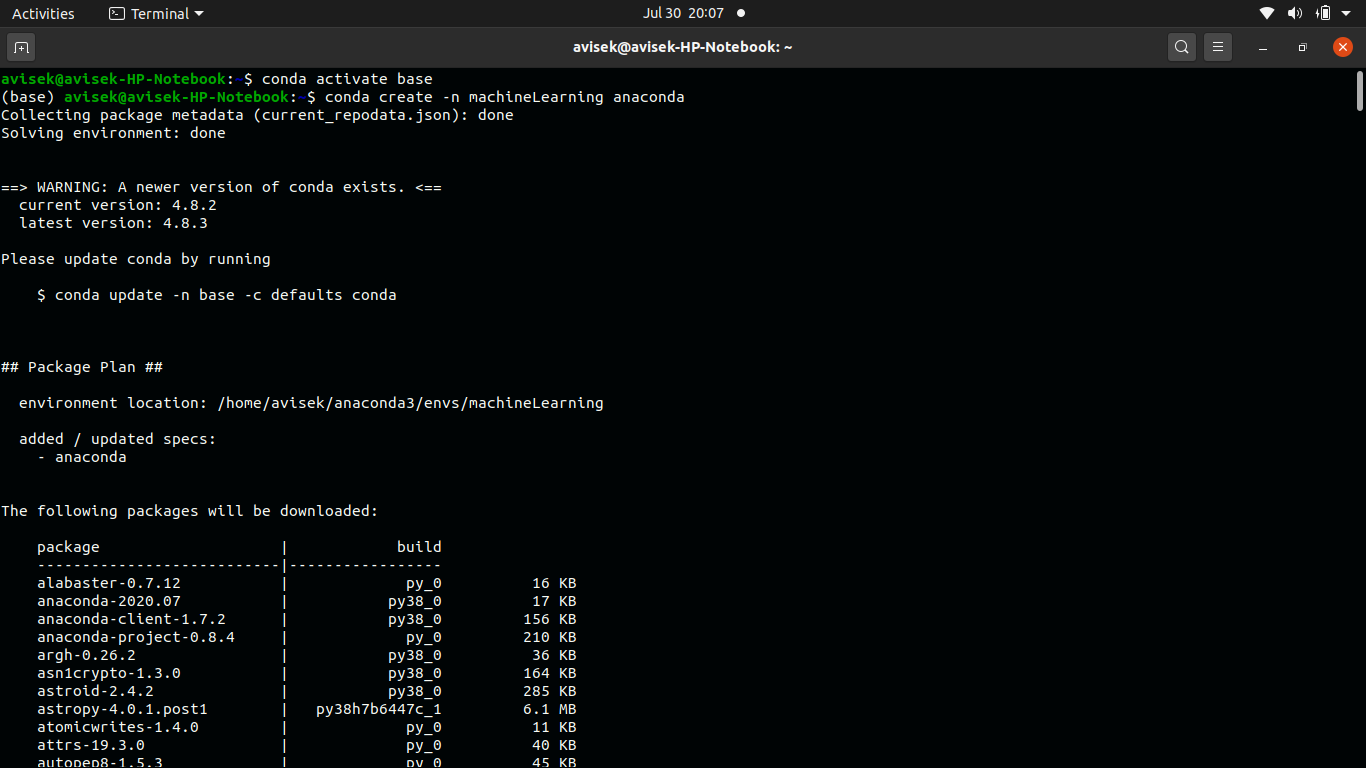

Same software in different versions or incompatible software collections You can install many python and non-python packages yourself usingĬonda enables you to easily install complex packages and software.Ĭreating multiple environments enables you to have installations of the Requirements.txt should now be identical and thus should replicate theĮxperiment setup as closely as possible.

Your virtual environment and the new one installed from the same $ python -m pip install -r requirements.txt You create a virtual environment with Python: Users can install Python packages in a virtual Python environment. In this case, conda is the better solution. In some cases, packages installed with pip have problems with complex dependenciesĪnd libraries. These can contain different Python versions and packages. It is easy to use and can be combined with virtualenv to manage Pip is the main package installer for Python and included in every Python Setup is that it allows other researchers to easily replicate your setup. Least have one for each disparate experiment. You can have many virtual environment and we recommend that you at Virtual environments in Python are a nice way to compartmentalize package Multiple versions of the same package or application without problems ofĬonflicting dependencies. Separate between different workflows/projects.

In both cases it is advised to use virtual environments to Pip and conda are the easiest ways of installing python packages and NIRD - National Infrastructure for Research Data.Using the virtual environment in a batch script.Open Question & Answer Sessions for All Users.Now if you want to install any particular package, through pip in conda environment, we can do it like −Ībove we have installed opencv package through pip in conda environment. We can install pip in our existing conda environment by simply giving the command − conda install pipĪnd your screen will be shown an output something like − Method 3 − If the package is not available in our conda environment or through anaconda navigator, we can find and install the package with another package manager like pip. To install a specific package such as opencv into your existing environment “myenv”(in case you have a virtual environment to install project specific packages). Note − It is recommended to install all required packages at once so that all of the dependencies are installed at once. We can install multiple packages at once, such as OpenCV and tensorflow − conda install opencv tensorflow To install specific a specific version of a opencv package − conda install opencv-3.4.2 Method 2 − Another way of installing packages is by the use of terminal or an Anaconda Prompt − conda install opencvĪbove command will install OpenCV package into your current environment. Let's suppose tensorflow packages are not installed in your computer, I can simply search the required package(like tensorflow), select it and click on apply to install it. It is very easy to install any package through anaconda navigator, simply search the required package, select package and click on apply to install it.

Go to Environments tab just below the Home tab and from there we can check what all packages are installed and what is not. Once “Ananconda Navigator” is opened, home page will look something like − Method 1 − One common approach is to use the “Anaconda Navigator” to add packages to our anaconda environment. There are multiple ways by which we can add packages to our existing anaconda environment.


 0 kommentar(er)
0 kommentar(er)
